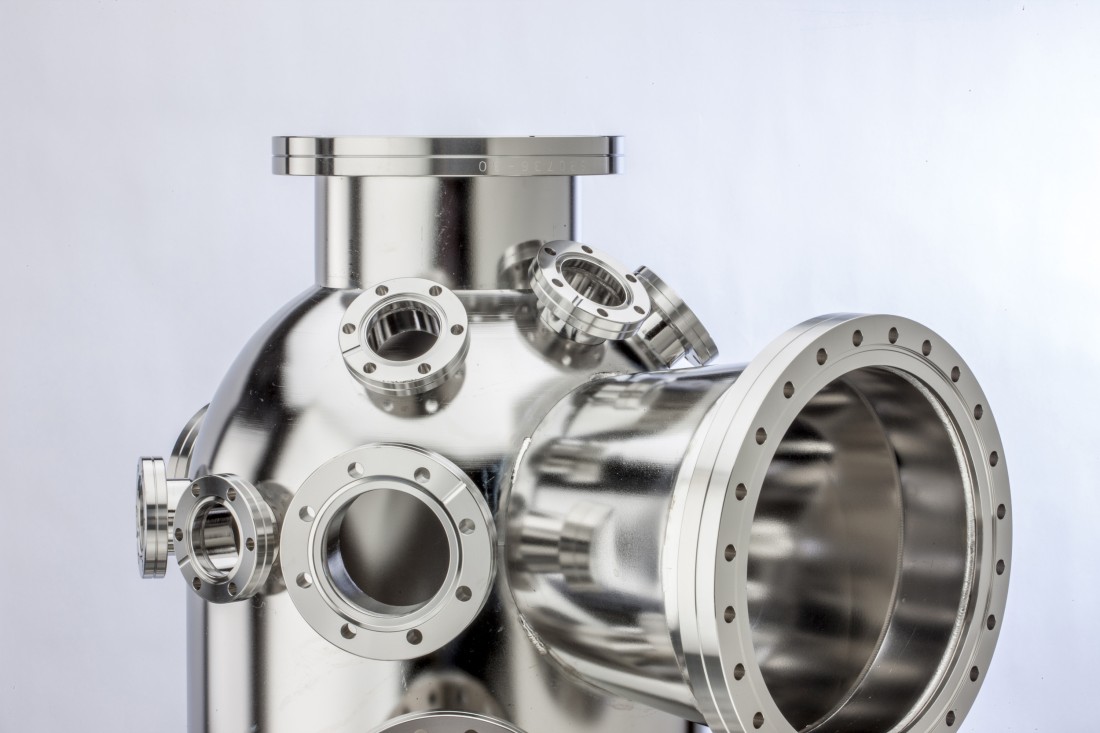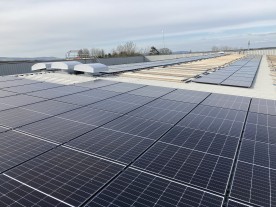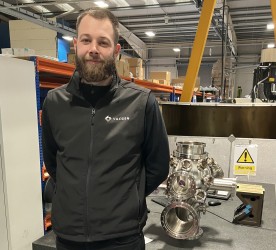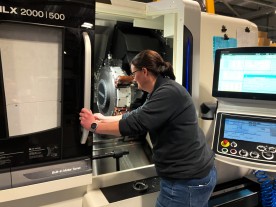Introduction
Mu-metal is a type of magnetic shielding material that is often used in electron spectroscopy chambers to minimise external magnetic interference. Electron spectroscopy techniques, such as X-ray photoelectron spectroscopy (XPS) or Auger electron spectroscopy (AES), are highly sensitive to magnetic fields. External magnetic fields can distort the trajectories of electrons, leading to inaccuracies in the measurements and affecting the overall performance of the spectroscopy system.
Physical Properties
Mu-metal can be used as a very effective magnetic screen as it exhibits high attenuation at low levels of the interference field (e.g., earth’s magnetic field). There are certain design criteria which relate both to the physical properties of mu-metal and the way that the chamber must be constructed. These must be considered before embarking on a mu-metal chamber design. For instance, dished ends or hemispheres should always be used, as opposed to flat base and top plates as this will reduce the need for extra thick material and therefore reduce the overall mass.
Low Magnetic Field
Mu-metal vessels provide an internal volume with low residual magnetic field (typically <5 milligauss) and are desirable on experimental systems involving low energy electrons (<100eV). These experiments require chambers with many ports accommodating the detectors and electron sources. A hole made in the mu metal envelope reduces the shielding effectiveness. The penetration by the external field extends internally to a distance approximately equal to the hole diameter. The solution is to provide a Mu-metal port on the vacuum vessel with a length at least equal to its diameter. Bell-jar type chambers must be fitted with a perforated Mu-metal baseplate to allow for pumping and to provide access for drives, feedthroughs etc. There must be substantial Mu-metal overlap between the baseplate and the chamber walls, and the Mu-metal/Mu-metal contact should be as tight as possible to form a complete magnetic circuit.
Magnetic Shielding
Mu-metal is a nickel-iron alloy with high magnetic permeability, which means it can effectively redirect and absorb magnetic flux. By using mu-metal in the construction of electron spectroscopy chambers, the aim is to create a magnetic shield that reduces the influence of external magnetic fields on the sensitive electron trajectories within the chamber. The low magnetic permeability of mu-metal helps prevent the penetration of external magnetic fields, providing a controlled and stable environment for electron spectroscopy experiments. This is crucial for obtaining accurate and reliable data in these types of experiments where precise measurements are essential.
Summary
In summary, mu-metal is used in electron spectroscopy chambers to minimise external magnetic interference and create a stable magnetic environment, ensuring the accuracy and reliability of the spectroscopic measurements. Our wealth of experience in custom vacuum projects, ensure you can trust our dedicated team to assist in the design and production of even the most bespoke chamber requirements. We have the capability to supply ultra-high vacuum chambers of any complexity, in a range of materials - including mu-metal, stainless steel, aluminium, aluminium alloys and nickel-based superalloys. Throughout our partnership, experienced technical staff are on hand to manage your chamber project through manufacture, providing information and support, ensuring that the project’s build targets are met. As a result, VACGEN provide unrivalled value for money by supplying fabrications that fulfil your requirements first time, every time.
If you are looking for a chamber manufacturer who can fulfil your order, then contact us today for a quotation.








